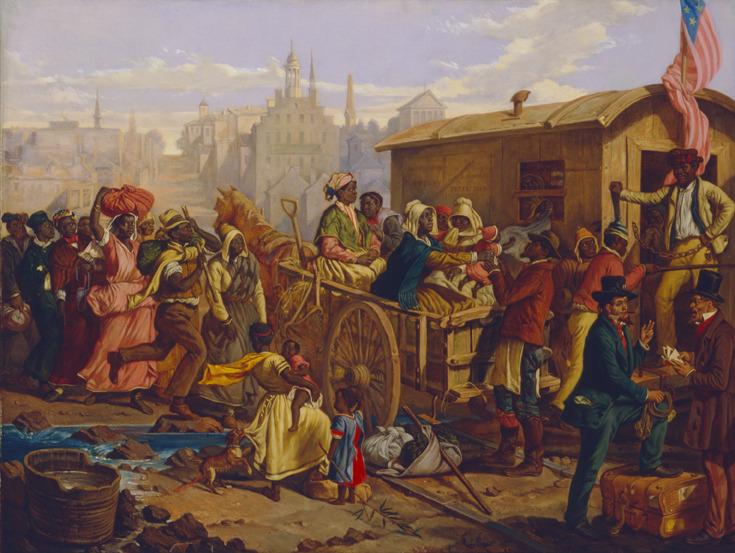After the Sale
The auction completed, traders and their agents shipped the enslaved people to the Deep South, where they would be sold again. Enslaved people often used the expression "sold down South" or simply "sold South" to talk about family members who had been sold away, generally to locations and fates unknown, but imagined to be far harsher than life in Virginia. People were transported by ship, by rail, or overland on foot (and sometimes fastened together) in groups called “coffles” that sometimes numbered as many as three hundred people. The overland route was long and hard, often lasting two months. By the 1850s, coffles became less common as railroad lines crisscrossedthe South. Traders increasingly relied on railroads to transport slaves more quickly and cheaply. The people arrived in better physical condition and thus would sell for higher prices.
The end of that journey was often New Orleans, the largest slave-trading city in the United States. The trade in New Orleans was notably different from other cities—larger in scale and grander in setting. New Orleans’ slave jails, called depots, commonly held two- to three hundred people, and enslaved people were sold in the most stylish rooms in the most stylish hotels and lined up on the streets for all to see.
